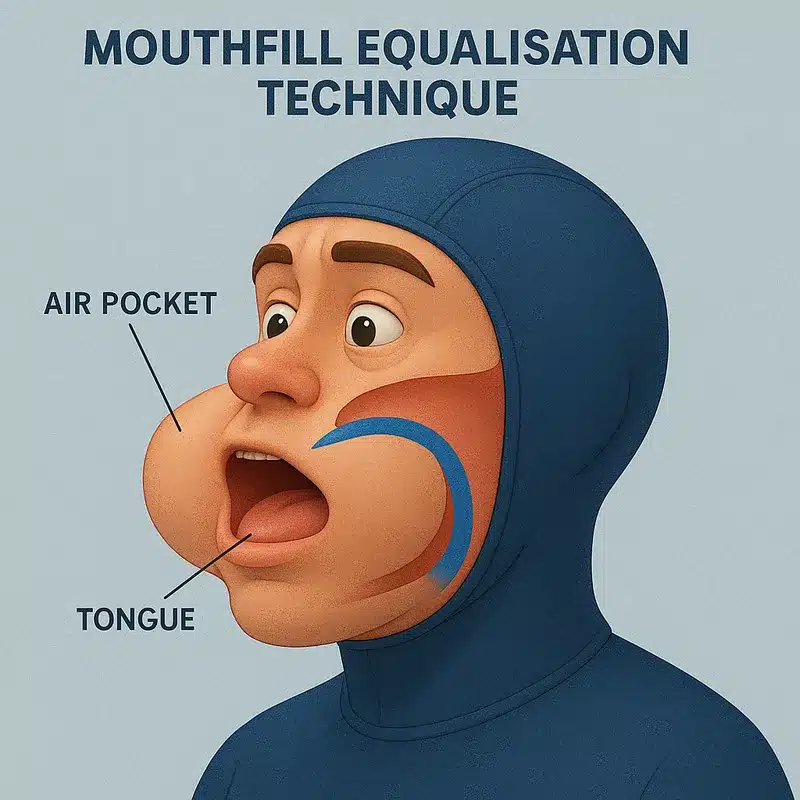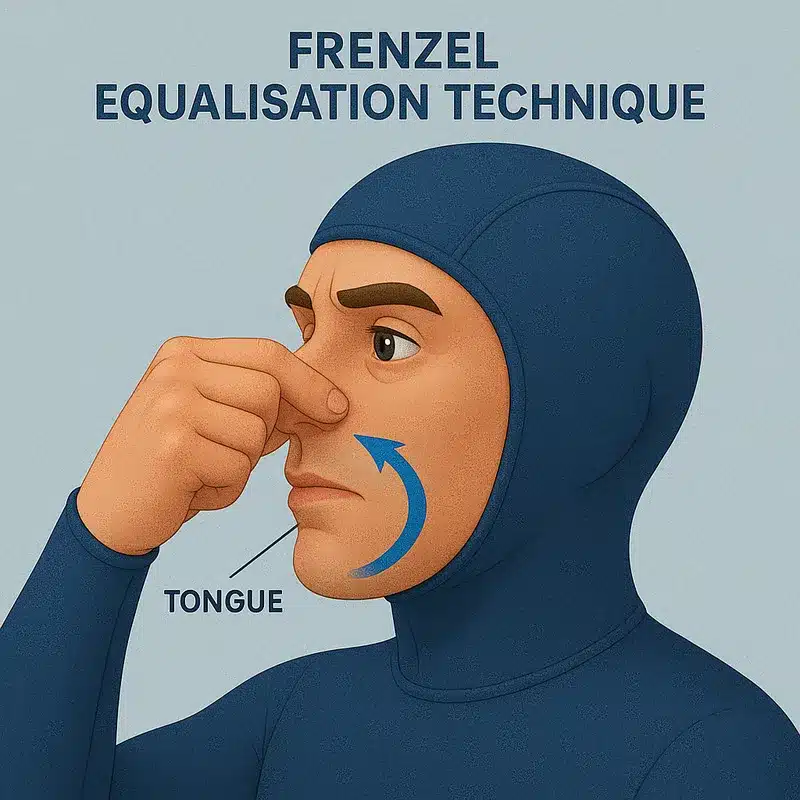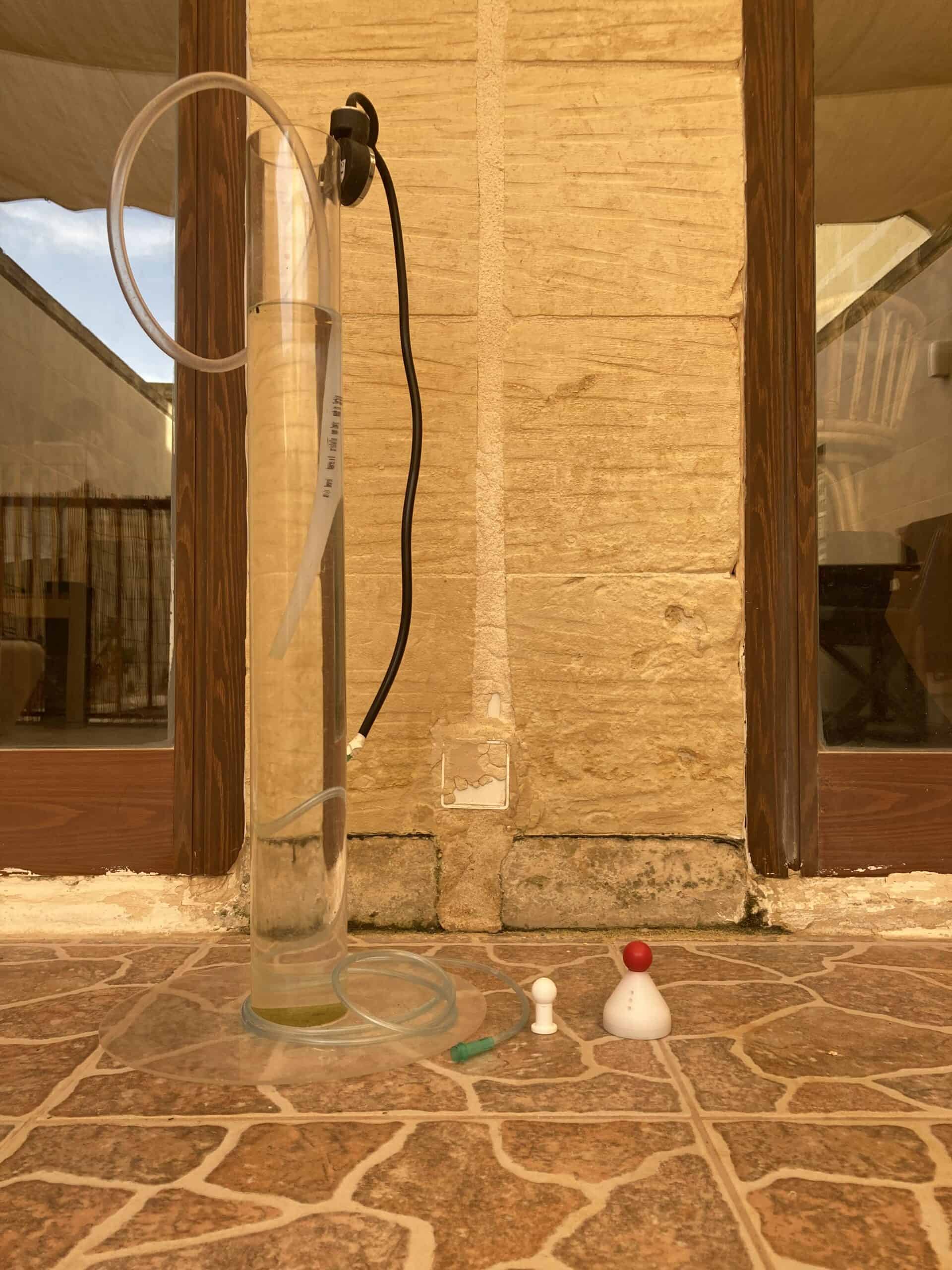During a freedive, the airspaces inside our body reduce in volume. As we dive deeper, this reduction in volume deceases. It goes without saying that during a dive, we must shift air into the throat and oral cavity to compensate for this reduction. During the first few metres of a dive, most beginners would instinctively top up air without even knowing what is going on by means of reverse packing. As they dive deeper, problems may occur depending on the skills of the individual. The deeper we dive the more skills we need to learn; air-shift techniques come in two forms, reverse packing and expiatory effort.
What are the air-shift techniques?
There are two methods of recharging the oral cavity; by means of reverse packing or expiratory effort. Reverse packing involves dropping the tongue or tongue and jaw to pull air from the lungs. This is a much more relaxing air-shift technique as the lungs, ribcage and abdominal are completely disengaged. Expiratory effort involves pushing air from our lungs by means of abdominal contraction and crunching forward. Expiratory effort is not as relaxing because of the force used to push air. The lungs and ribcage are elastic. As soon as we push air, the lungs are compressed and quickly go back to their original position. This is what causes the ‘loss of relaxation’. To sum up, reverse packing involves pulling air whilst expiratory effort involves pushing air.
How does reverse packing work?
For reverse packing to work, we must have individual control of all the parts involved in equalisation. The soft pallet, nose and mouth must be closed or sealed. Once we know that these ‘doors’ are closed, all we need to do is open the glottis and move down the tongue. As we move the tongue down, air is pulled from the lungs into the oral cavity. It’s important to remember to close the glottis after pulling the air in order to hold this air in side the throat, otherwise it will be swallowed. We can further charge air into the oral cavity by lifting or opening the jaw after or during the dropping of the back of the tongue.
The deeper we dive, the more difficult it will be to reverse pack as we reach residual volume. In fact, as we dive past residual volume, it is only possible to reverse pack with the tongue. Reverse packing with the jaw and tongue can only be done before we reach residual volume, at around twenty metres.
How does expiratory effort work?
Expiratory effort is much of a more simple technique than reverse packing. It involves pushing air from the lungs by contracting the abdominals. It is usually thought by the use of phonetics and different sounds are made according to what level you want to charge the oral cavity. For example, the ‘N’ charge will charge the oral cavity just like a tongue reverse pack. The ‘N’ is easier to teach a beginner than reverse packing because this type of a charge keeps the soft pallet open and automatically connects the two cavities together. Everyone is capable of pronouncing the letter ‘N’.
We can further explore expiratory effort with the ‘M’ charge. This charges the oral cavity at all three levels; the cheeks, jaw and tongue. This is what is called the mouthfill technique and is usually thought once a diver reaches around 35 to 40 metres by use of the frenzel technique.
How often should we top up?
During the first part of the dive, we want to top up relatively often. The more air we have in the oral cavity and behind the tongue, the easier it will be to compress air. In the first ten metres, we know that the volume is reduced by half. This means that every one or two equalisations, we want to top up. As we pass ten metres, we can top up at a slower rate and past twenty, only a couple of times.
As we reach residual volume (approximately thirty metres), it will be harder to top because of the negative pressure inside our lungs. At this depth, we should avoid expiratory effort unless we are properly trained. Pushing air from our lungs at this depth can cause lung squeeze / barotrauma. Reverse packing is definitely possible and safer however it does involve a better skill-set. Depending on the depth we want to reach, we can either reverse pack or push air into the oral cavity before we reach residual volume.
Calculating how deep you can take a charge
It is possible to calculate how deep you can take a charge. For the sake of argument, let’s say you take a mouth-fill at the surface and take it all the way to 20 metres. This means that you took the charge from 1 bar (surface, 0 metres) to 3 bar (depth achieved, 20 metres). 3/1 = 3.
If we were to take the same charge at twenty metres (3 bar), you could theoretically take the charge all the way to 80 metres (9 bar). To get this result, we must multiply the amount of bar we took the charge to (surface, 3 bar) by the bar of the depth at which we took the charge (twenty metres, 3 bar).
Of course, this is in theory. It’s very difficult to gauge if you took the exact same charge both on the test and in practice.
Conclusion
Like anything else in freediving, air-shift techniques are skills. These skills can be trained on land, and the more we practice, the quicker we will learn them. The most challenging of these skills is without a doubt reverse packing. The first piece of the puzzle is learning how to keep the soft pallet in the closed position. We can simulate being close to our residual volume and by the use of a pipe, otto-vent and bottle of water, begin reverse packing exericses.
If you wish to learn more about these techniques, please get in touch with me. I am a Moving limits equalising instructor and have been thought by Federico Mana.


